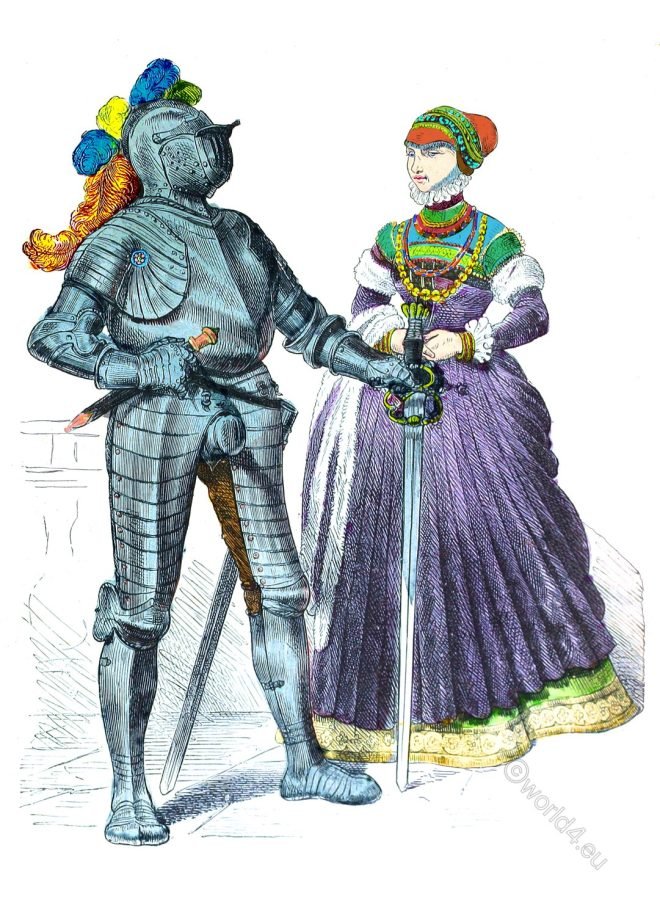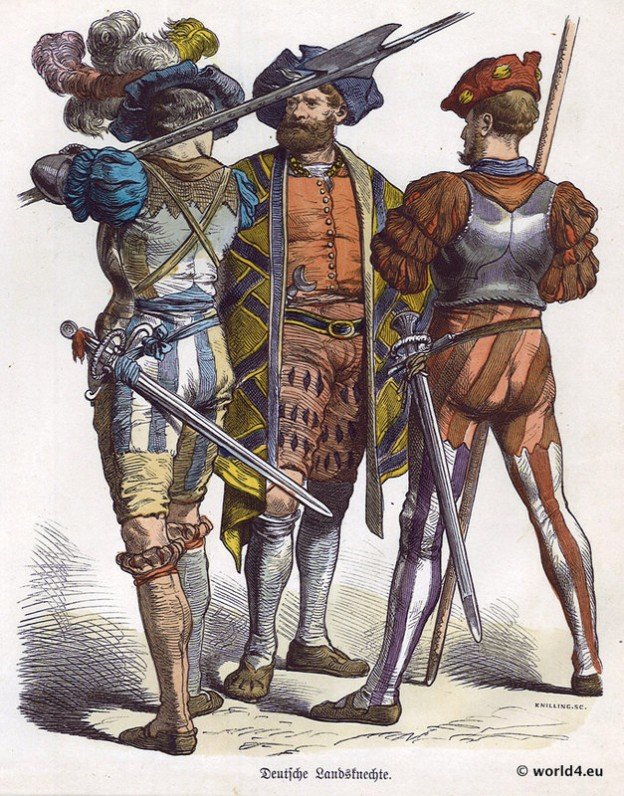Charles II the Bald (823–877 Holy Roman Emperor Charles II, King of West Francia), with Military Leader, Knight in armor, Musician.
Category: Germany
Belle epoque. A couple dancing the valse bleue.
Belle epoque is the term for a period of about 30 years at the turn of 19th to the 20th century.
German knight on horse. Middle ages. 12th c.
On the armor or corslet he wears a surcoat. Hauberk, boiler cap, leg braces, knee tile, almond-shaped shield.
Knight and noblewoman. Last third of the XVIth century.
On the history of costumes. Thirty-eighth sheet. XV. and XVI. century. Knight and noblewoman. Last third of the 16th century.
German Gothic Fashion. Citizens in 1440.
German Citizens 1440. They represent the reformation time. This means that the materials were cheaper and coarser.
German patrician women. First third of the 16th century.
German patrician women. First third of the 16th century. Renaissance fashion history.
Medieval gothic costumes. German princess and maid of honor, 1350.
The princess wears a one-piece, front buttoned dress Cotehardie called, with long tight sleeves and wide neckline (front and rear). Buttons presented at that time a novelty, instead of the lateral lacing allowed a figure-hugging dresses section.
Lansquenet. German renaissance military.
German soldiers during the time of the Renaissance and Reformation.
German child fashion and Hair style in 1910.
German child fashion and Hair style in 1910.
German peasants c. 1530. Fashion 16th century.
German peasants. First third of the XVIth century. c. 1530. On the history of costumes.









